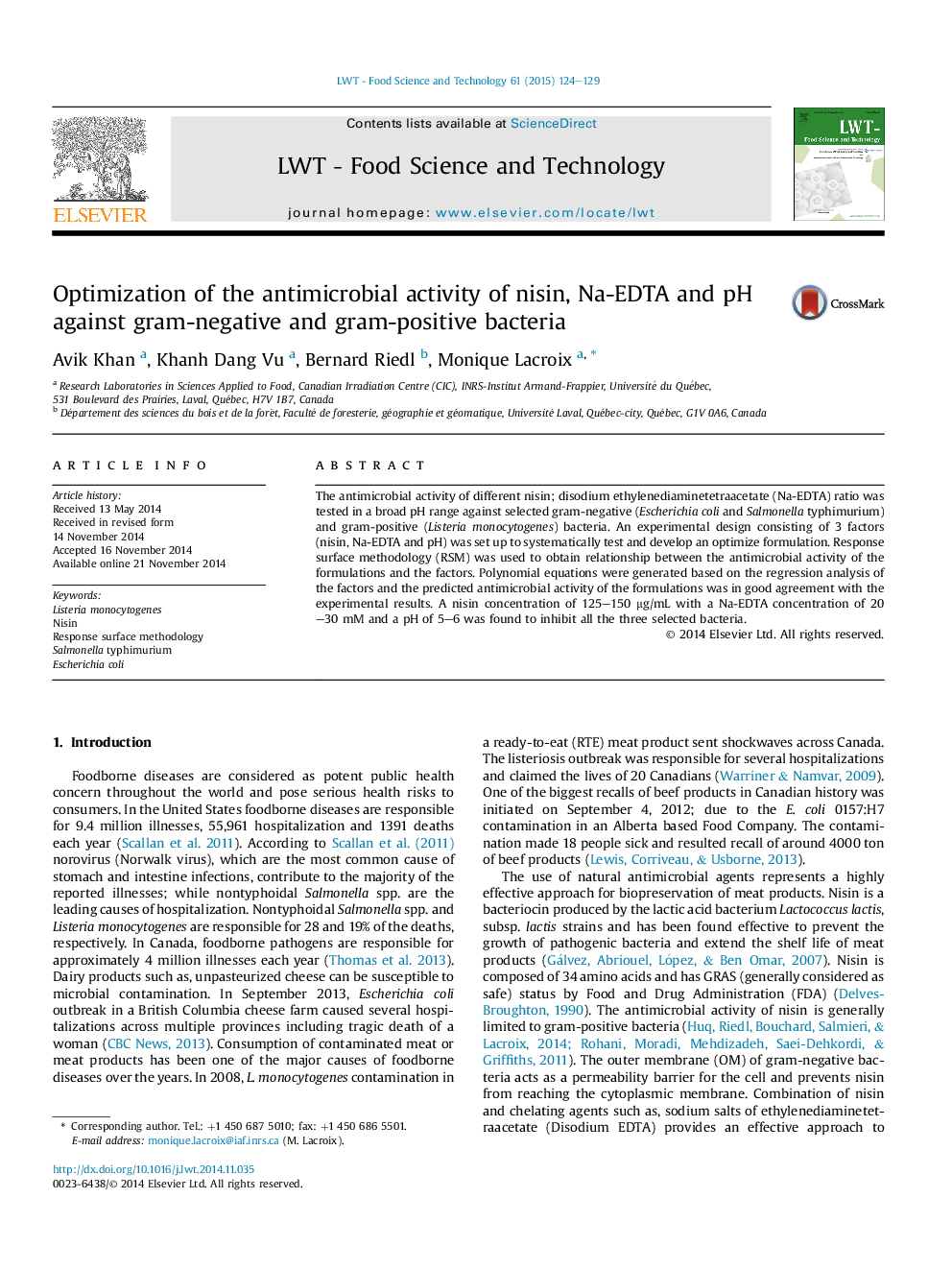| Article ID | Journal | Published Year | Pages | File Type |
|---|---|---|---|---|
| 6401407 | LWT - Food Science and Technology | 2015 | 6 Pages |
â¢Optimization of the antimicrobial activity of nisin.â¢Utilization of central composite design and response surface methodology.â¢Antimicrobial activity against gram-positive and gram-negative bacteria.â¢Good antilisterial activity over a broad pH range (3.5-7.5).
The antimicrobial activity of different nisin; disodium ethylenediaminetetraacetate (Na-EDTA) ratio was tested in a broad pH range against selected gram-negative (Escherichia coli and Salmonella typhimurium) and gram-positive (Listeria monocytogenes) bacteria. An experimental design consisting of 3 factors (nisin, Na-EDTA and pH) was set up to systematically test and develop an optimize formulation. Response surface methodology (RSM) was used to obtain relationship between the antimicrobial activity of the formulations and the factors. Polynomial equations were generated based on the regression analysis of the factors and the predicted antimicrobial activity of the formulations was in good agreement with the experimental results. A nisin concentration of 125-150 μg/mL with a Na-EDTA concentration of 20-30 mM and a pH of 5-6 was found to inhibit all the three selected bacteria.
